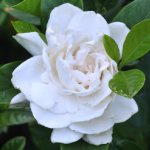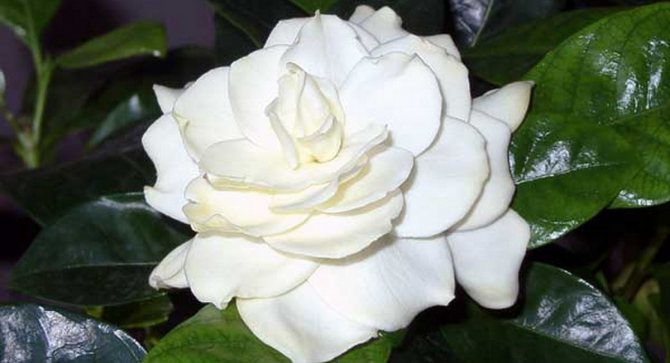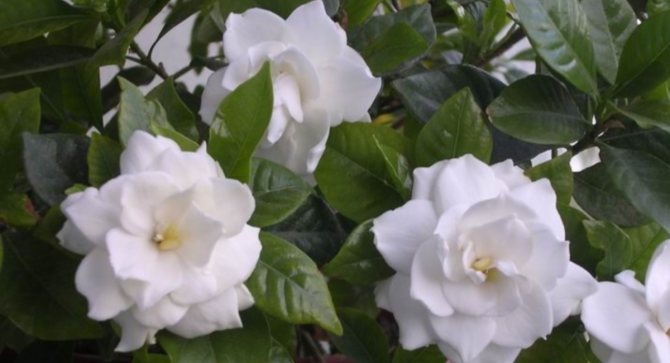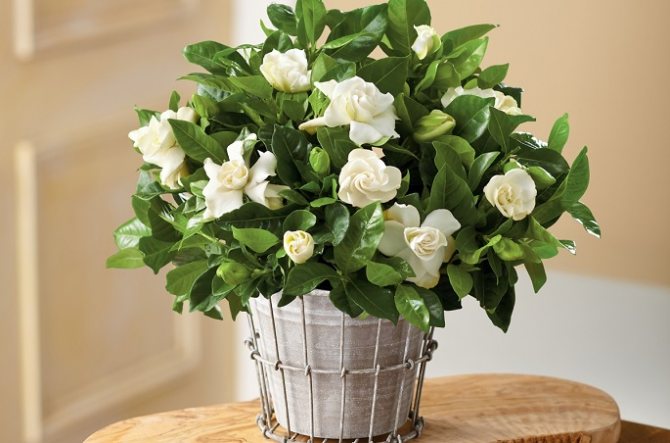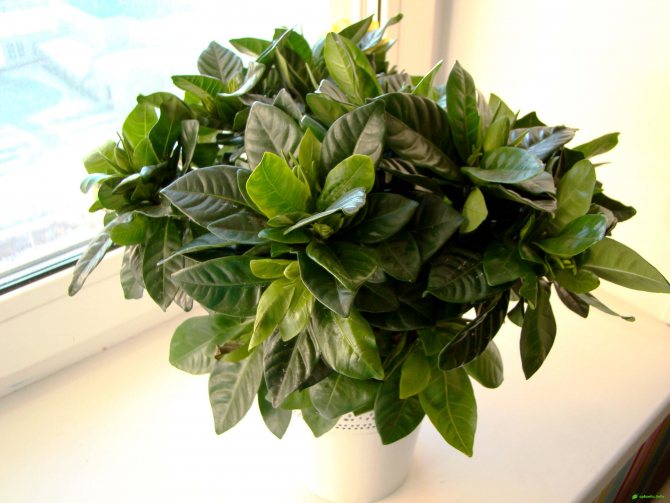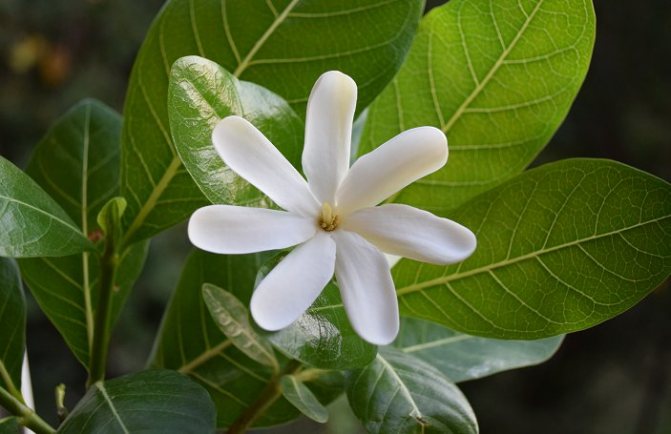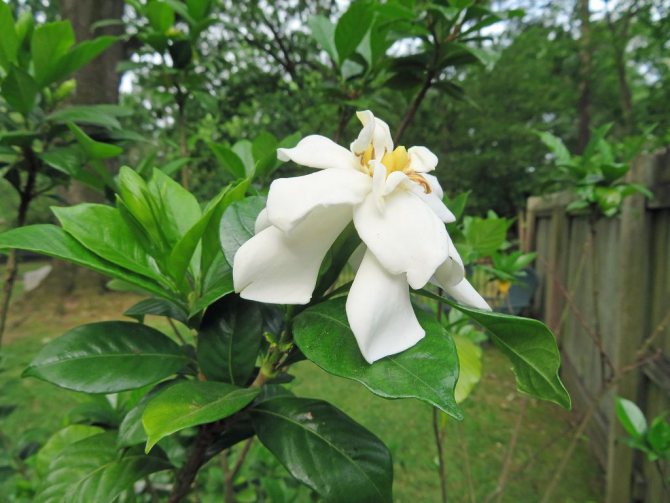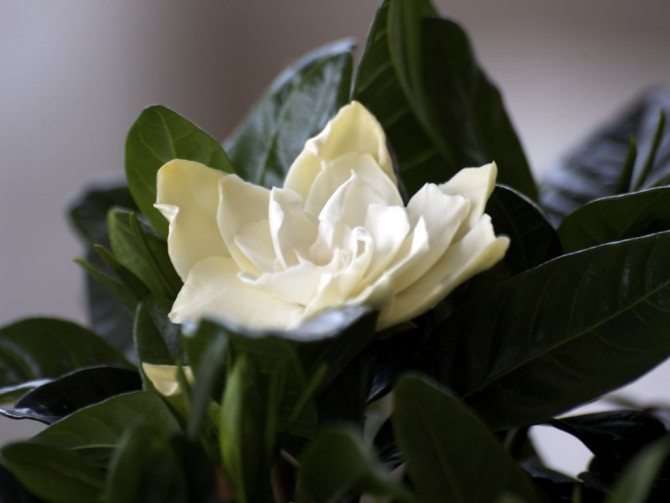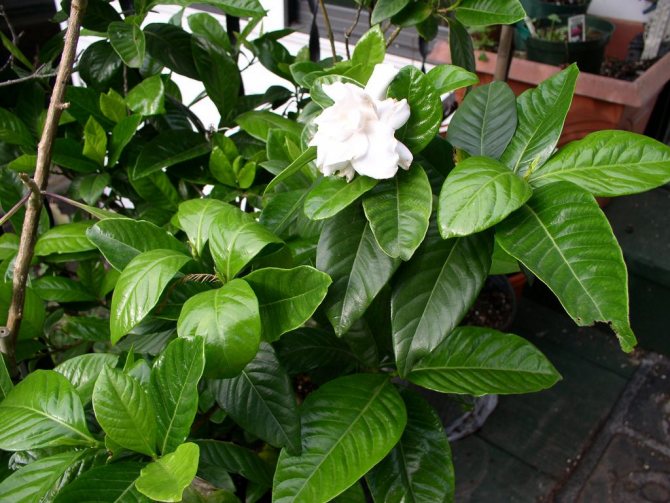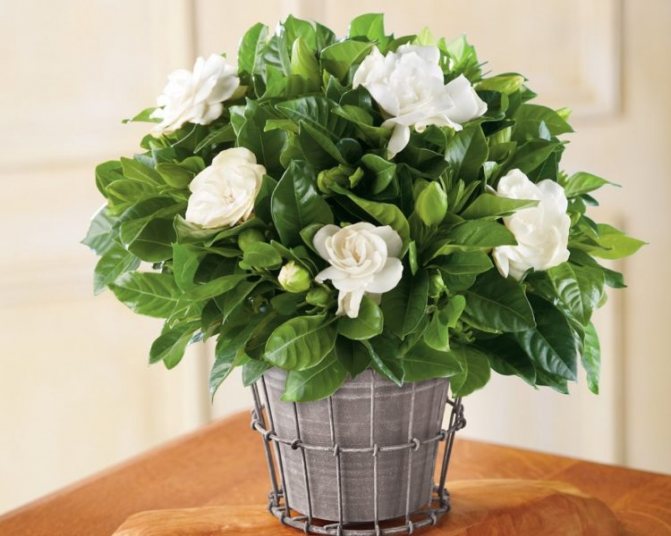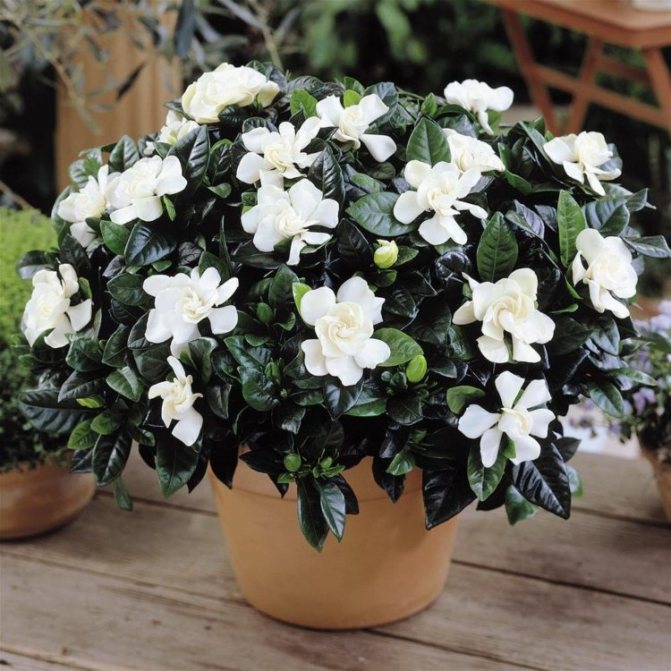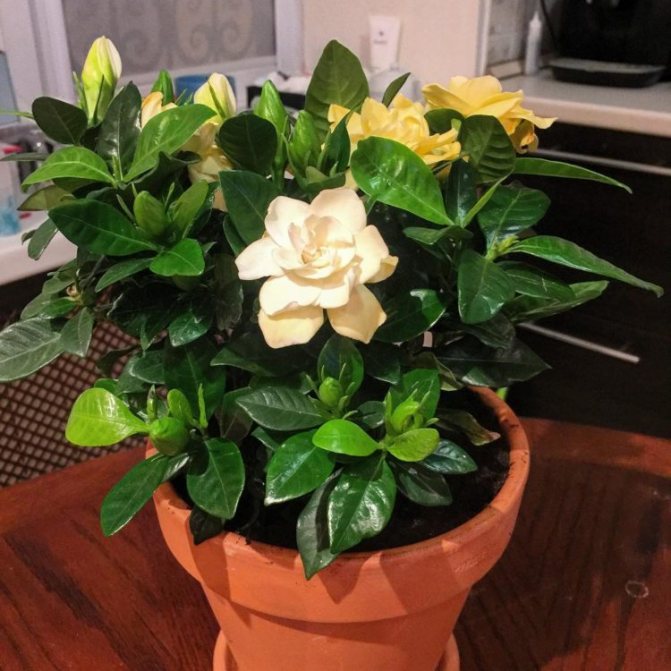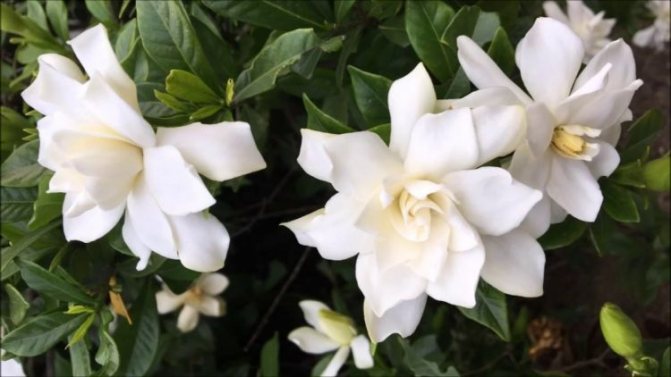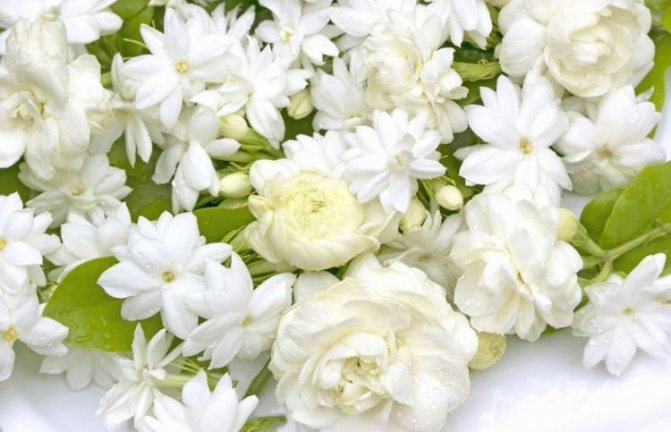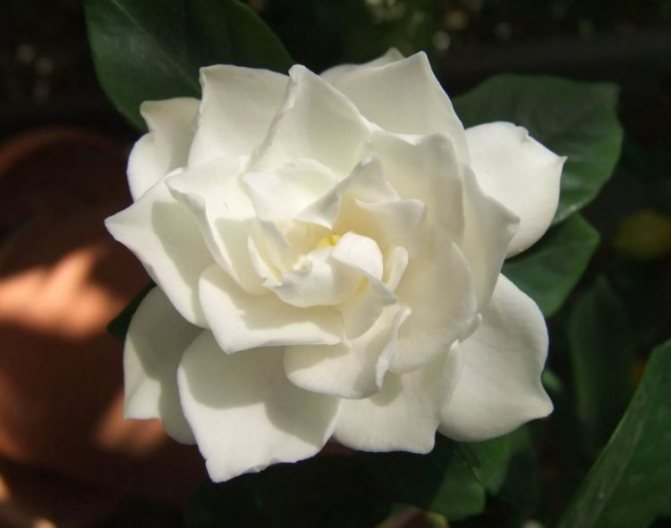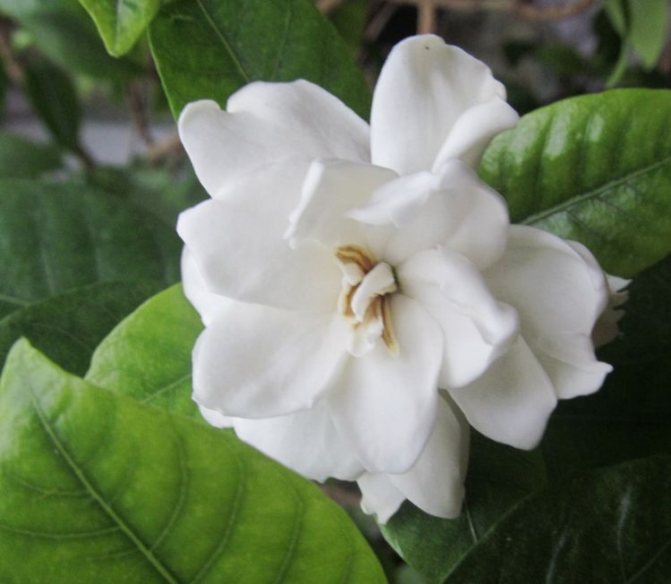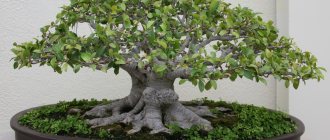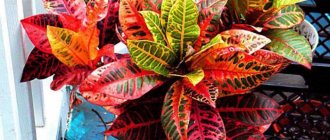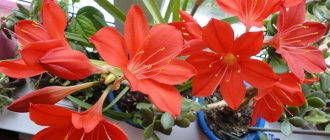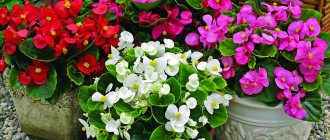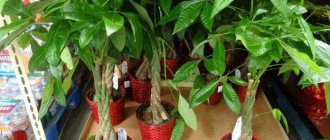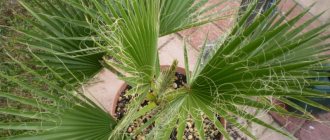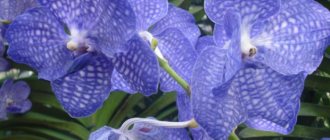Gardenia (Gardenia) is famous for its large, snow-white flowers, similar to roses. During the flowering period from summer to autumn cold, fragrant, double buds densely cover the stems.
The flower was named after the Scottish botanist-naturalist Alexander Garden.
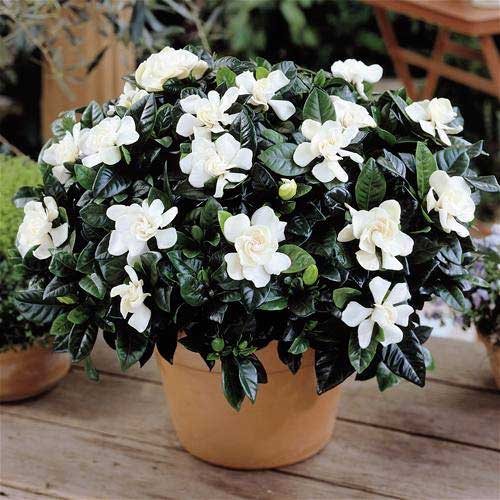
Gardenia
The natural habitat of the flower chose the subtropical zone of Japan, India and China. At home, the flower is grown not only for decorative purposes, it is used to prepare medicines for various ailments. A decoction of roots and fruits is used to treat wounds and burns of the skin, rinse for tonsillitis and stomatitis.
Anti-inflammatory, hemostatic and antipyretic drugs are obtained from the luxurious gardenia. Chinese medicine uses the plant for insomnia and overwork, headaches.
The aromatic oil extracted from gardenia flowers is in demand in cosmetology and perfumery. Flower petals of a number of plant varieties are added to tea as a flavoring agent.
Description
The genus Gardenia includes numerous types of shrubs, small trees, some of which can be considered as ornamental plants. The most popular representative of the genus is Gardenia jasmine, which is increasingly found in floristic compositions. The genus represents the family - Madder.
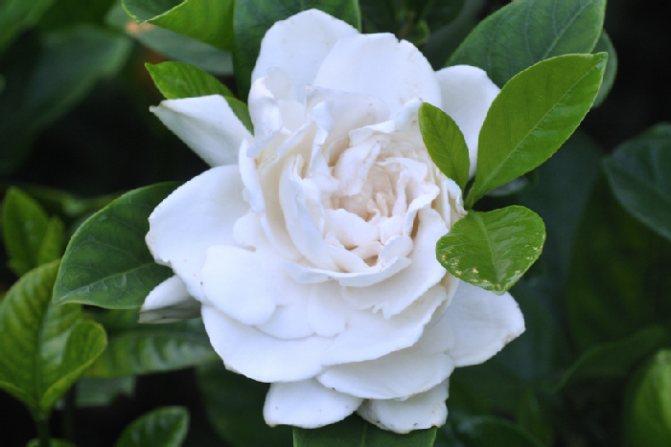

The natural habitats of plants belonging to the genus are tropical regions of the Asian and African continents.
When and how does it bloom?
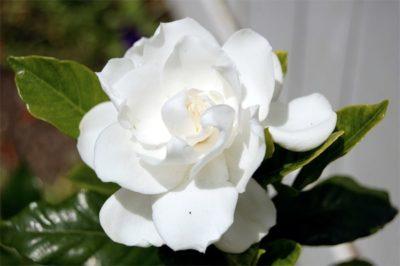

The flowering phase begins in March and lasts until September. First, the gardenia prepares for the process, around April-March bud buds appear. It is during this period that the flower requires careful care. It is forbidden to transplant the gardenia. It is impossible to even stir it or move it, and touch the flowers with your hands. Even the slightest flaw can lead to the dumping of the buds.
I would also like to note that the flowers do not bloom all at once, but one by one. Therefore, on the green shrub, there are several snow-white buds that ripen for 2 months. BUT the blossoming flower stays on the gardenia for about 4 days... Faded inflorescences must be immediately torn off, for the formation of new ones. You will learn in this article about why gardenia does not bloom and what care should be followed in order to form buds.
Views
- Gardenia jasminoides - Gardenia jasmine (rooting);
- Gardenia taitensis - Tiare, or G. Tahitian;
- Gardenia thunbergia - G. Thunberg;
- Gardenia volkensii - G. Volkens;
- Gardenia mannii - G. Mann;
- Gardenia latifolia - G. broadleaf;
- Gardenia philastrei;
- Gardenia uliginosa;
- Gardenia tubifera - G. tube-nosed.
As a houseplant, the gardenia is jasmine-like, the only species that is in high demand.
Photo
See what a jasmine gardenia houseplant looks like:
Gardenia jasmine
Gardenia is not only beautiful flowers with an alluring aroma, but also dark green decorative leaves that emphasize the beauty of the inflorescences. In winter, the plant is a unique, extremely aesthetic accent in the home.
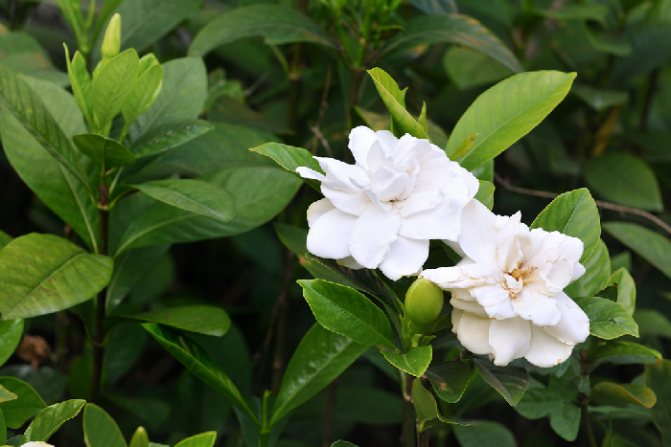

Structure
Jasmine gardenia can be purchased in the form of a small bush, reaching several tens of centimeters. It is worth noting that over time, the height of the plant can reach more than a meter, depending on the variety, in its native places it has the shape of a small tree.
The evergreen shrub impresses with leathery, oblong, lanceolate, dark green leaves with an extra shine, against which the inflorescences look great. The species is characterized by single, tasty-smelling flowers, the varieties are more diverse - single, semi-double and double flowers. The color of the flowers is white to cream, when they fade, they become more yellow. The flowering period is during the summer months, but it is worth noting that the widespread Veitchii blooms in winter.
Jasmine gardenia is characterized by an intense scent similar to that of jasmine. The similarities are reflected in the names of the plant species.
Origin
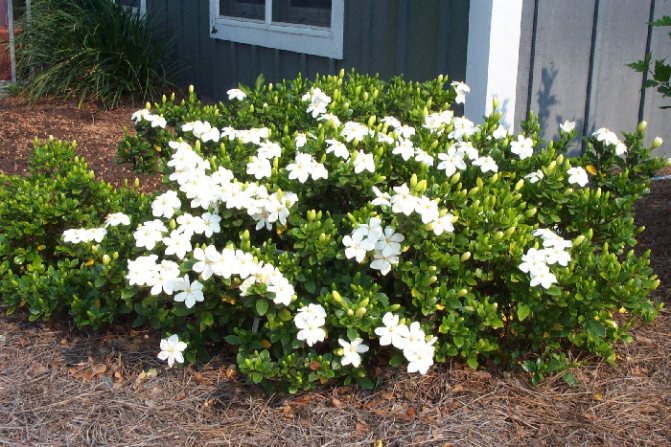

The native places of the jasmine gardenia are located on the Asian continent in China, Japan and Taiwan. Overgrown with tropical forests, among others with rhododendron and azalea. In their natural environment, they have unique conditions for development, at home they feel worse and are characterized by higher requirements.
Variety of varieties
Gardenia varieties differ in size, shape of flowers and leaves. The most valuable are varieties with double and fragrant flowers. In this varied wealth, decorative forms with variegated leaves can be found.
Conditions of detention
The gardenia indoor flower loves light and warmth. The plant reacts poorly to excess moisture and sudden changes in temperature. The plant must be given a permanent place, because even small movements of the pot and turning the plant lead to the fall of flowers and leaves. Direct sunlight should also be avoided to avoid losing flower buds.
A western or eastern window is suitable for gardenia. In winter, additional lighting will be required, which is located at an interval of at least 1 m from the plant. Buds react poorly to a lack of lighting.
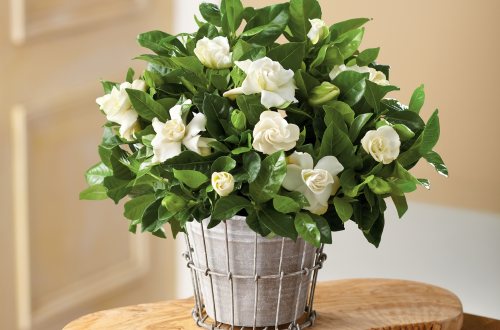

Gardenia jasmine
In summer, a gardenia will appreciate a stay in the garden or on the balcony. With the onset of cold nights, hypothermia of the root system should be avoided and the flower should be brought into the house.
In spring and summer, the conditions for keeping gardenia are quite warm - not lower than + 22 °.
In winter, gardenia flower buds need + 16-20 ° to set. With an excess of heat in winter, gardenia will not give flowers, and with a lower temperature regime, root rot is possible. It is important to maintain the same temperature of air and soil.
Varieties
- "Variegata" variety with single, fragrant, white flowers and variegated leaves.
- "Martha Turnbull" flowers are single, fragrant, star-shaped.
- "Kleim's Hardy" is a single-flowered variety.
- "August Beauty" is a decorative variety with fragrant, white flowers.
- "Golden Magic" is a beautiful variety with double flowers. White at first, cream over time to golden brown. Looks great against a background of dark green leaves.
- "Veitchii" is a popular variety, reaching about one meter in height. Fragrant double flowers reach about 3 cm in diameter. The variety, as a rule, can be purchased from late autumn. It is also prized for its winter bloom.
- "Mystery" variety with white, double flowers.
- "Aimee Yoshioka" is characterized by white, double flowers.
- "Daisy" is a cultivar with single, white flowers.
- "Radicans" flowers are white, double and fragrant.
- "Frost proof" gardenia variety with interesting, aromatic buds.
- "Miami Supreme" variety with large, double and fragrant flowers.
- Grif's Select has single, white and fragrant flowers that look great against a background of dark green leaves.
- Chuck Hayes has white double flowers that look great against large leaves.
- "Rothmanii" is a cultivar with fragrant and double flowers.
The main problems in growing
All gardenia diseases that are not associated with plant pests are caused by improper care.The choice of a method to save your tropical beauty largely depends on the cause of the disease.
Why do the leaves turn yellow?
The most common cause of yellow leaves is inadequate watering of the plant. It is important to remember that gardenia is damaged by both lack and excess of moisture.
If everything is in order with watering, then yellowness on the leaves can also occur due to a lack of iron. The situation can be corrected by feeding with special preparations containing iron, for example, Ferovit.
Another reason for the yellowing of the leaves is a sharp temperature drop. Remember that gardenia is very sensitive to all changes and try to provide it with a comfortable and stable environment.
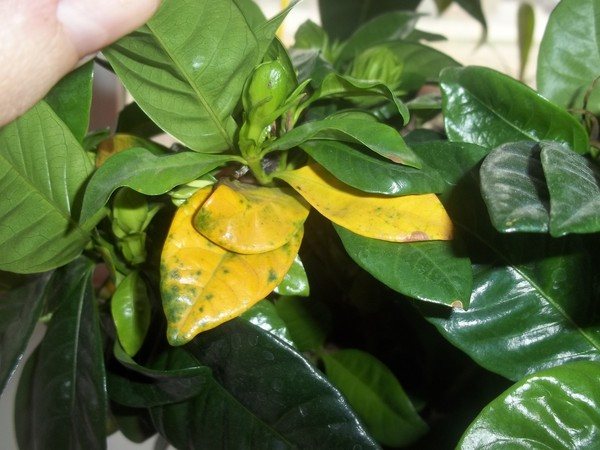

Why do the leaves turn black and fall
Gardenia leaves turn black and fall most often due to damage to the root system. To fix this problem, you should check that the soil is permeable to air and that the drainage holes are not clogged. These reasons can provoke stagnation of water, which leads to decay and weakening of the root system of the plant. You can solve the problem with the root system by transplanting a plant.
Why gardenia doesn't bloom
Prolonged absence of flower buds on the gardenia may indicate the following problems:
- lack of sunlight: in this case, you should move the pot to a more illuminated area or purchase a special phyto-lamp;
- insufficiently acidic soil: this problem can be solved by fertilizing the soil;
- dry air: it is necessary to humidify the air at the location of the plant (see methods above).


Gardenia leaves turn black and yellow, and then fall off
This problem may be due to improper plant transplantation. The small roots, which are responsible for the nutrition of the entire plant, are damaged when the soil is changed. As a result, gardenia leaves begin to turn yellow or black and quickly fall off (several leaves a day). One cannot do without another transplant, observing all the rules.
It is important to note that moderate loss of foliage in older plants is a natural process. One should only be afraid when the phenomenon becomes widespread.
Leaves turn black, but do not fall
Blackening of the leaves is caused by improper watering of the plant. This problem can develop against the background of both dry and waterlogged soil.
It should be remembered that watering should be regular and moderate.
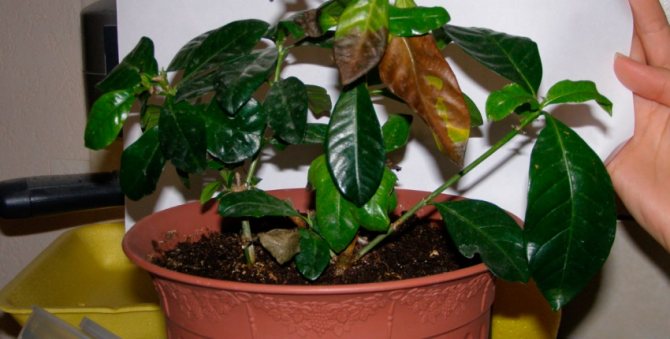

Why does it dry?
A common reason gardenia dries out is low humidity levels. Remember to regularly spray the plant and wipe the leaves with a damp cloth.
Dropping buds and flower buds
All the reasons that worsen the general condition of gardenia also affect the refusal to bloom:
- insufficient lighting - if there are buds on the plant, then it is better to supplement the lighting with a phyto-lamp than to move the pot;
- lack of iron or nitrogen - in this case, the balance should be restored gradually, otherwise the opposite effect can be achieved;
- low humidity - increasing air humidity by spraying and placing the pot on a pallet with damp pebbles.
How long is the adaptation period
This tropical plant is very delicate and sensitive, so it can hardly endure all changes and changes. After buying a gardenia, she needs acclimatization, it lasts about 2-3 weeks.
What can be done to accelerate growth?
Slow growth of gardenia is usually caused by inadequate amounts of light or nutrients. To speed up the growth of the plant, you should slightly acidify the soil and add lighting to the plant.
Gardenia Jasminidnaya is a great gift for flower lovers. Lush blooms and beautiful leaves will not leave anyone indifferent. Do not be afraid to start such a wonderful plant at home.With proper care, it will delight you with its incredible beauty and captivating scent for a long time.
Did you like the article? Was she helpful?
Care
The beautiful shrub is incredibly moody, you need to familiarize yourself with home care. The natural habitat has already been mentioned, which certainly makes it easier to care for and meet the needs of the plant.
Gardenia requires a bright place, but no direct sunlight.
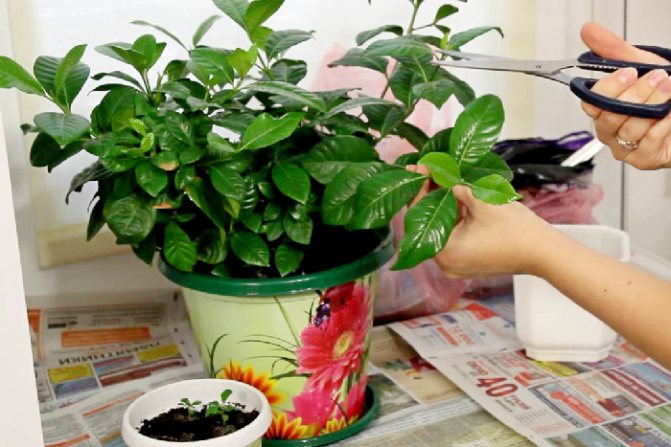

Of course, fresh air will have a good effect on the plant, drafts will do more harm than good. Having a secluded terrace or balcony, in the summer, after pre-hardening, which increases the strength of the plant, you can try growing your gardenia outdoors with light partial shade.
It should be remembered that the plant must be moved indoors until the temperature drops significantly.
Gardenia will find suitable conditions for development in a greenhouse; at home, a not too warm, bright room will be a good room.
Four helpful grooming tips
The overseas beauty is capricious and picky. She needs attention, love, competent care.
Take care of the soil


A prerequisite for gardenia jasmine is the correct soil for planting.
After the purchase, hurry up to transplant the plant to a new place. (preferably a clay pot filled with fresh soil).
The earth should have high acidity, absorb moisture well, let air pass through.
For the soil mixture, four equal parts are mixed:
- river sand,
- peat,
- coniferous land
- riding ground.
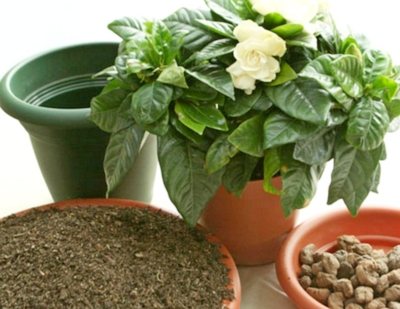

The soil is spilled with a weak solution of potassium permanganate.
Choose a deep flower pot so that the roots feel free.
Required check for drain holesas gardenia does not like stagnant water.
Before planting, put small pebbles on the bottom of the pot, fill half of the container with soil, carefully lower the plant, fill in the remaining soil, water, lightly tamp the soil around the stem.
Important! Gardenia cannot be left in a pot from a store. The earth contains a large amount of stimulant additives. You should also not transplant a flowering bush.
Carry out water treatments
Plants cannot exist without water. Gardenia is no exception.
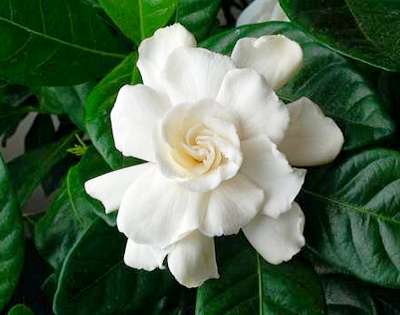

Watering your pet must be correct.
Then she will thank you with a healthy look and beautiful flowers.
The shrub does not tolerate dry, hard soil.
He prefers loose, moist soil. Water should be plentiful in hot weather, moderate in cold weather.
Gardenia doesn't like hard tap water. It is better to water it with warm rain or filtered one.
Excess moisture adversely affects the development of the root system, so you should not leave water in the pan of the pot.
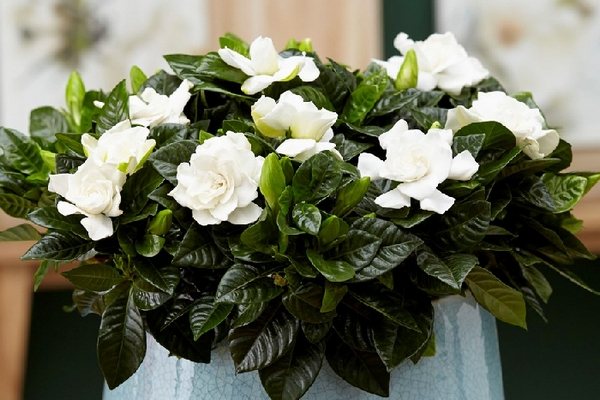

For lush flowering, you need to moisten the soil, air, leaves.
Important! It is useful to add 2-3 drops of citric acid to the water, since the flower prefers acidic soil.
Provide warmth
Compliance with the temperature regime guarantees growth, development and flowering.
Cape jasmine is a southern plant. A comfortable place for a flower pot is a warm, light windowsill. In summer, it is necessary to shade the delicate greenery from the sun's rays.
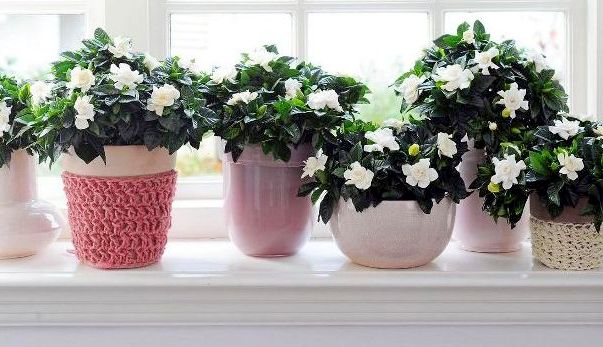

Temperature regime depends on the season. In the summer day, the air heats up to 21-24 ° С, at night - 15-18 ° С. In winter - 10-16 ° С;
You can achieve the required temperature by airing the room.
Attention! Gardenia does not tolerate drafts. Cold air destroys buds, flowers, adversely affects the health of the pampered guest.
Feed your fill
A plant, like a person, needs proper nutrition. Feeding indoor gardenia is more convenient liquid fertilizers.
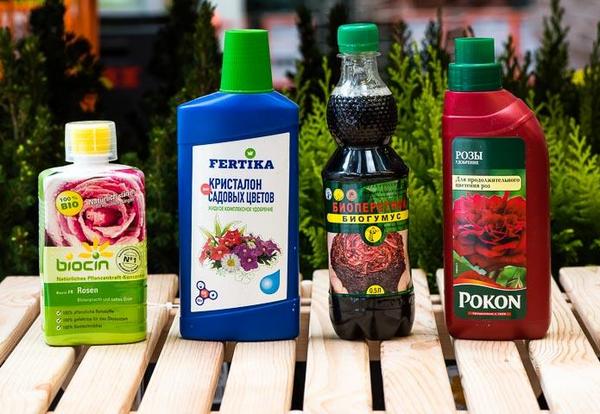

It is better to opt for a mineral complex with a minimum calcium content.The concentration of the solution must be in accordance with the instructions. An excess of mineral supplements will harm the shrub;
Top dressing of a healthy flower is carried out once every two weeks, a weakened one - once a week.
On a note. A solution of actiferrin (0.5 teaspoon per glass of water) will help to saturate the plant with microelements. The substance is sold in pharmacies.
The soil
Success in growing gardenia depends on an appropriate substrate, which must be acidic. The acidity of the substrate must be maintained for an additional maintenance period. Alkaline-free substrate should be light, humic, nutritious, supplemented with drainage. To maintain the acidity of the substrate, use special fertilizers and soft water, such as rainwater or settled boiled water. From time to time we acidify the substrate. It helps by watering the gardenia twice a month with water with the addition of a few drops of lemon. The lack of an acidic substrate interferes with the absorption of certain nutrients, leading to leaf chlorosis and stunted growth.
Four instead of one - we multiply
Gardenia can reproduce in two ways: cuttings and seeds. If you wish, you can increase the number of flowers yourself.


Seeds
The seeds are viable for 2-3 days. Before sowing, they are treated with aloe juice or zirconium preparation. Sow into damp ground, tamp, sprinkle with sifted soil.
After that, the containers with seeds are covered and placed in a warm, humid place. Sprouting seeds it is necessary to remove the film and air it daily... Seedlings appear two months after planting.
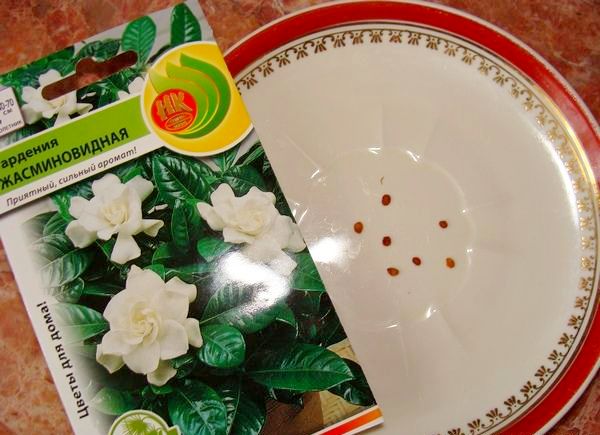

Cuttings
Cuttings suitable for propagation, must be strong, healthy... You can use the branches after the next pruning of the bush.
The size of the planting material is eight to ten centimeters. The branches are treated with potassium permanganate, planted in prepared light soil.
In the video you will see how to do it correctly:
The earth is watered with warm water, covered with foil. The optimum temperature for rooting shoots is 25 ° C.
Important! The cuttings will take root faster if you give them a steam bath every day, heating the container over hot water.
The plants that have taken root are transplanted, pinched the tops, and provide full care.
Transfer


In the early years, replant the gardenia every year, then every few years, when the root system does not fit in the pot. Tall plants grown in large containers do not need to be replanted, just replace part of the substrate. Carefully remove the top layer of soil, fill it with new, fresh soil.
The plant must be provided with a permeable substrate and drainage. Thanks to this, the plant will be less prone to overflow.
The best time for a gardenia transplant is spring.
Pests, diseases
Among the insect pests that infect a flower: scale insect, spider mite and mealybug. The diseased plant looks depressed, the leaves turn yellow and fall off, the buds turn black and the flowers fall off. In case of infection, the plant is treated with an insecticidal preparation on a plant basis that is safe for humans. In case of severe damage, spraying is repeated at intervals of 7 days.
Often, flower growers have to observe the fall of the formed buds. The reason is a violation of the temperature regime during the rest period, errors during watering and a change in the position of the flower relative to the light.
The leaf color change to yellowish comes from the use of hard water and keeping at low temperatures. When the leaves turn yellow, the gardenia is irrigated with ferrous sulfate.
In case of the appearance of chlorosis and yellow streaks on the leaves, you need to pay attention to the composition of the soil. It should be sour.In the absence of an annual transplant, the top layer of the earth with white calcium deposits is changed once a year.
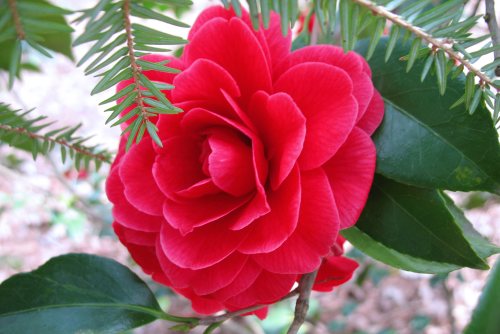

Gardenia red
Little or no bloom indicates lime content in the soil and insufficient acidity. Flowering does not occur at low temperatures, insufficient lighting, when the air in the room is dry.
Watering and humidity
In growing gardenia at home, proper watering and air humidity are of great importance, humidity is difficult to achieve, especially during the heating season.
During the growth period, they are watered quite abundantly, providing the plant with a constantly moist, but not wet substrate; in winter, the top layer of the soil should be allowed to dry out before the next watering.
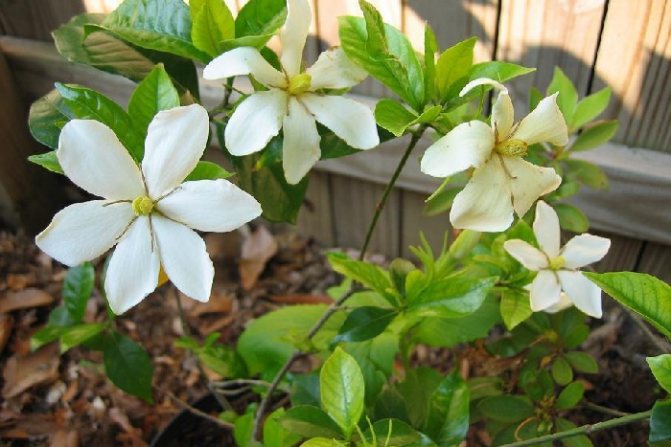

To maintain normal air humidity, you need to spray the plant with soft water daily. When spraying plants, you should avoid wetting the flowers, brownish spots may appear on them.
The air humidity can be increased by placing the pot with the plant in another container filled with moist peat or placing the pot on a stand with expanded clay filled with water in such an amount that the bottom of the pot does not come into contact with water.
Change of place of residence
It is necessary to transplant a gardenia, observing certain rules:
- take your time, let the plant adapt to new conditions;
- find a more spacious pot;
- move with a lump of earth so as not to disturb the roots;
- lay a drainage layer of small stones, expanded clay on the bottom of the pot;
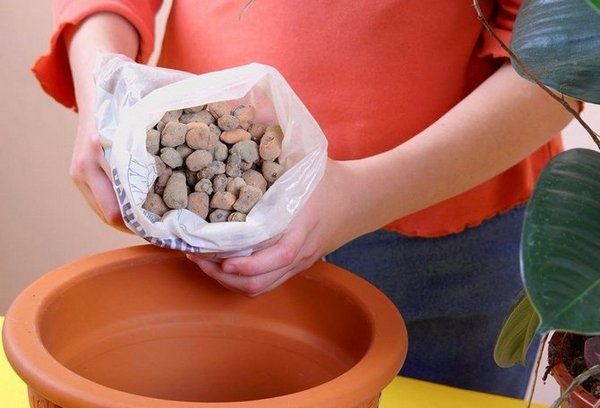

- pour the earth with warm water, tamp;
- if the plant is old, inspect the roots, remove damaged areas, disinfect with a weak solution of potassium permanganate;
- after transplanting, pour with warm filtered water, put in a permanent habitat.
Attention! Gardenia should not be disturbed in preparation for flowering, with flowers in full bloom. The plant will better tolerate the transplant when it fades.
Fertilizer
Considering the special requirements of the gardenia, the plant is fertilized with an alkali-free liquid fertilizer intended for acid-loving plants, twice a month, at a lower concentration than recommended.
Other care procedures
From other procedures related to the cultivation of gardenia, it is worth mentioning the use of warm water for irrigation. The plant does not like cool ground.
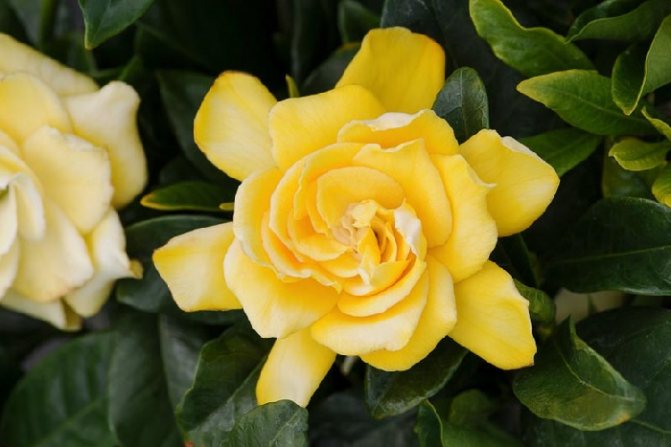

The flower should be cleaned of dust with a soft and damp cloth.
To maintain the compact form of the plant, the gardenia is pruned in the spring, cutting off the shoots is allowed - the possibility of obtaining the gardenia in the form of a very original stem tree.
How does it multiply
Gardenia jasmine reproduces in three ways:
- vegetative;
- seed;
- air layering.
Germinating seeds
Since the seeds very quickly lose their similarity, they are cleaned immediately after ripening and soaked in water for a day, only after that they can be sown. Sowing is done no more than five millimeters.
For successful germination when propagating by seeds, the following conditions must be observed:
- prepare a mixture of foliage, coniferous compost and perlite;
- temperature - not lower than 23 degrees;
- seeds germinate only after four months;
- sprouts that have sprouted before two leaves appear, it is recommended to dive into separate pots.
Rooting cuttings
The plant can also be propagated by cuttings. For this method, you should cut off a stalk ten centimeters long. The cut site is treated with a root stimulant. For successful germination, the following conditions must be met:


Gardenia is transplanted every two years.
- the air temperature must be at least 24 degrees;
- for better rooting, it is recommended to create partial shade for the cuttings;
- high humidity is encouraged;
- airing is imperative;
- the soil should be slightly moist;
- rooting mixture consists of sphagnum moss and perlite;
- rooting period - from one to two months.
Air layering
For this method, you will need to clear the leaves of at least ten centimeters from a long pagon. A notch is made under the leaf bud in the middle of the pagon, which must be treated with hot water and a stimulant for root formation. The place of the incision is wrapped in sphagnum moss, then plastic wrap. As soon as the roots appear, the shoot is cut off and planted in the ground.
Reproduction
Gardenia is propagated vegetatively, before, through apical cuttings, generative propagation from seeds is possible.
With vegetative propagation, in early spring, apical cuttings are taken, having 2-3 nodes (10-15 cm long). Leaving one pair of leaves, the end of the cutting must be immersed in water with a root, then placed in permeable soil (peat mixed with sand - 1: 1). Cover the container with foil, not forgetting about the ventilation of young plants.


Rooted seedlings require a warm substrate; in vitro propagation is a good and effective solution.
The rooting time of seedlings is several weeks.
Growing problems
When growing gardenias, you can face many adversities, usually due to mistakes in growing at home, not observing gardenia care at home.
At the outset, it is worth noting that gardenia is an acidophilic plant and the substrate must have an appropriate pH level. Neglecting the plant by providing it with an alkaline substrate will limit the absorption of the relevant nutrients and lead to yellowing of leaves while maintaining green veins. Underground acidification, soft water and appropriate fertilizers are the basis for protecting gardenia from chlorosis.


In cool weather, the plant may leaves fall, the leaves turn black, the buds fall off, also in the case of insufficient moisture. The buds can fall off when the soil pH is high or after replanting the plant.
If moisture gets on the inflorescences, brownish spots, in a very sunny place, burns may occur.
Too low plant with pale and small leaves, requires replenishment of nutritional deficiencies, transfer to a bright room.
Of the pests, spider mites, scale insects, mealybugs and thrips should be wary of.
Application
Gardenia jasmine is an example of an ornamental plant that is problematic to care for and grow at home, but it's worth trying, it doesn't always end in failure. The plant does not tolerate the kitchen, but it will endure the cool living room, only in the greenhouse can it get optimal conditions for development.
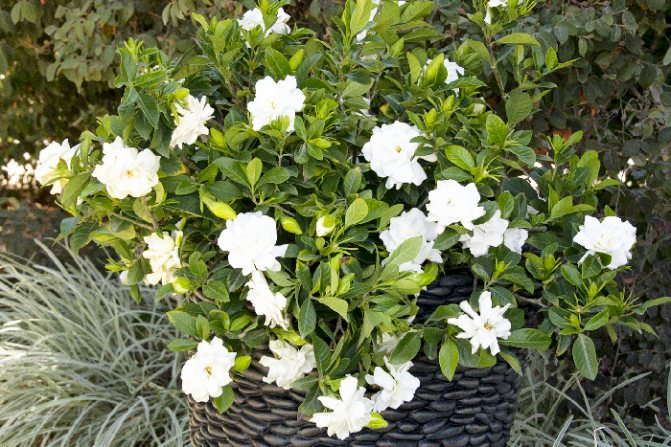

It is an interesting accent in interior design, grown for bouquets and used as a boutonniere.
Because of its high decorative style and wonderful aroma, it is worth pursuing the cultivation of a versatile but unique gardenia.
How to transplant a gardenia at home
It is advisable to transplant jasmine gardenia every couple of years, but in no case during flowering, otherwise the buds may fall off. The plant is transplanted in this way:
- First you need to remove the gardenia from the pot and, carefully shaking off the roots from the old soil, place it in a solution (room temperature) of the biostimulant for the time indicated on the package.
- A steamed drain should be placed on the bottom of the pot, then add sand, then a layer of charcoal, and only then add soil on top.
- During the preparation of the soil for transplanting, the gardenia was well fed while in the solution. Now it should be carefully, trying not to damage the root system, divide it into several shoots, distribute the roots and place in a pot, slightly adding soil.
- After the flower has successfully "migrated" back into the pot, the remains of the biostimulant should be poured into it and placed in a warm place where it will not be disturbed by direct sunlight and drafts.
- After planting, watering should not be carried out very often, but it is better to let the plant "drink" only when the ground dries slightly, about 2 centimeters deep.
Jasmine Gardenia (Gardenia jasminoides)
This is one of the most fragrant plants: during flowering, the room is filled with a magical aroma.
Gardenia jasmine (Gardenia jasminoides) is an evergreen shrub about 1 m high, in young plants the leaves are oblong-ovoid, pointed at the top, become more rounded with age, their color is bright or dark green, they are leathery, glossy. Buds usually appear at the ends of well-matured shoots. Flowers are single, double, large, waxy, with a strong pleasant aroma. At the beginning of flowering, their color is pure white, then takes on a yellowish tint.
In the rooms, they also breed mainly forms with double flowers, such as:
"Pleno" - with double, white flowers
"Vicha" - is of particular importance for landscaping, double flowers
"Fortuna" - flowers are large, 10 cm or more in diameter, double, shaped like a camellia, leaves are large, up to 15 cm long.
Landing features
Gardenia will not take root in an alkaline and neutral environment. For its development, soil mixtures with a high content of lime and nitrogenous substances are suitable. When planting a flower, you can use a purchased substrate for azaleas or prepare it yourself from equal parts of turf, coniferous, peat and deciduous soil, as well as river sand. When measuring, the acidity of the mixture should correspond to pH 4.5–5.5.


To prevent infection of the root system, it is recommended to disinfect the prepared soil with a weak solution of potassium permanganate or scald it with boiling water before planting the plant. Frying is not suitable as it destroys the beneficial constituents of the substrate.
The flower pot is chosen based on the size of the plant's root system. Clay, ceramic and plastic products are best suited. The containers made of ceramics and clay are environmentally friendly, their porous structure contributes to aeration of the roots and uniform evaporation of moisture from the ground. The disadvantages of such vessels are fragility (which is important to consider when transplanting a houseplant) and the difficulty of moving highly overgrown crops.
Important! When choosing a flower pot, pay attention to its inner side. For ceramics and clay products, it must be glazed.
You can also plant a gardenia in a plastic pot, but its smooth surface stimulates the stagnation of water in the lower layers, which in turn leads to rotting of the root processes.
Regardless of the material of the container for planting the flower, take care of the drainage. It is preferable to use fine expanded clay, filling the bottom of the vessel with it. Cover it on top with the prepared substrate and moisten. Then put the seedling inside, straighten the roots and sprinkle it with earth on top, tamping it down. To root the gardenia, it is better to tie it with a plastic bag or cover it with a glass container of the appropriate size.


Useful properties and meaning
The jasmine gardenia is eaten as a tint to the traditional Korean hwangphomuk jelly. Also, dried gardenia flowers are added to tea.
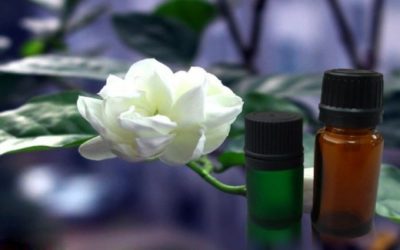

Gardenia is widely used for medicinal purposes. Both its fruits and roots are used. The plant has analgesic effects, it lowers blood cholesterol levels, fights various parasites in the human body. Gardenia is effective in the treatment of oral ulcers, dysentery, bleeding of various etiologies, inflammation of wounds and burns.
In the medicine of ancient China, the fruits of the flower were used at high temperatures, high blood pressure, hepatitis, insomnia, and chronic overwork.
Important! Be sure to consult with a specialist before using gardenia, because even touching its fruits can cause poisoning.
You can learn about the benefits and uses of gardenia from this article.
How to care after purchase
Immediately after the purchase, the shrub is transplanted, since the storey soil is scarce for the normal growth of gardenia, and the capacity is small and does not allow the rhizomes to grow freely.
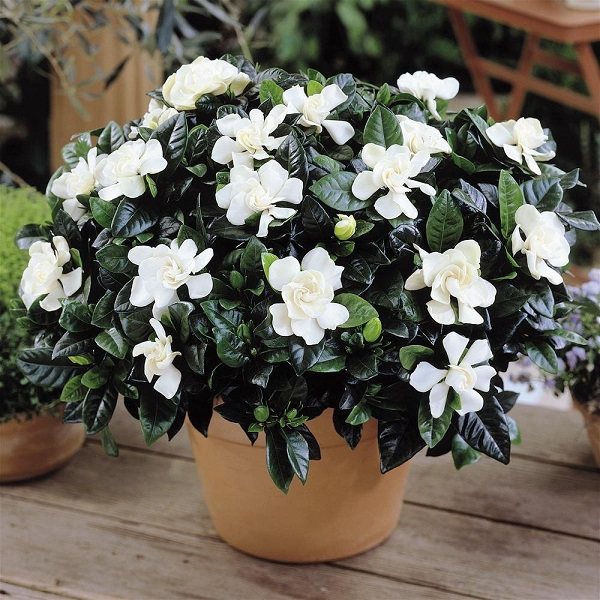

Transplanting is not done on the first day: the plant must adapt for about 2 weeks. Before the procedure, the gardenia is watered with warm water and, together with an earthen lump, is transferred to a prepared pot. This is a must, even if the shrub is purchased with buds.
Flowering temperature
In order for a flower to delight you with its flowering, you should observe the following temperature regime at different times of the year: spring-summer - keep the temperature at 22-24 ° C. During autumn, slowly reduce to 18 ° C. In the autumn-winter period, the favorable temperature for the plant will be from 16 to 18 ° C.


The roots of the flower must not be supercooled; the flower must not be placed in drafts. For excellent conditions for the formation of flower buds, reduce the temperature to 16 degrees.
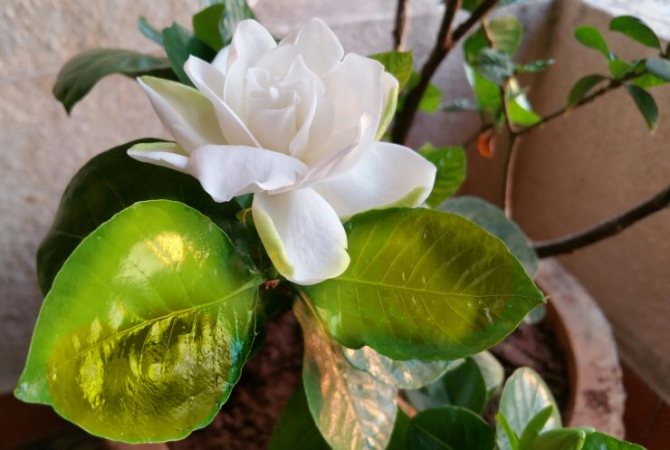

Secrets of choosing a plant in a flower shop
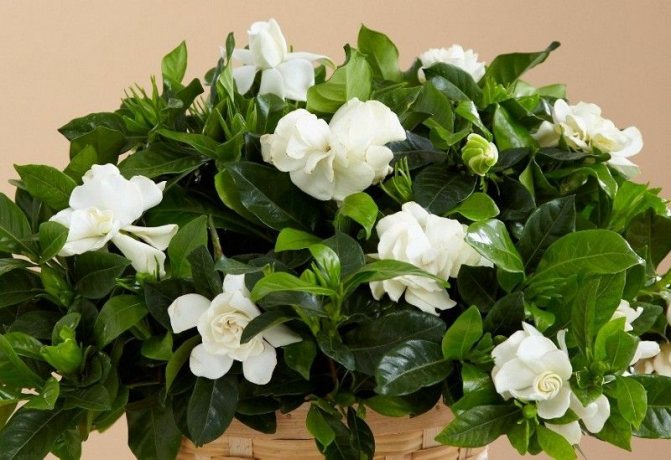

Before purchasing the desired exquisite and fragrant flower, a thorough inspection should be performed before purchasing. It is better to choose a bush with a well-formed, branched shape in different directions. If the plant initially seems sick, it has pale, yellowed or sluggish leaves, do not rush to buy. A drooping plant with crumbling flowers will not bring joy, satisfaction from enjoying its aroma and appearance.
A healthy plant looks gorgeous and costs a lot, but you shouldn't save money by buying a sick plant even with a significant discount. Remember, the miser pays twice. A gorgeous flower, with proper care, will delight you with an abundance of beautiful flowers. Filling the room with a delicious, pleasant scent reminiscent of jasmine.
Shine
As we mentioned, the lighting must be constant. The south side of the house will not work due to the presence of sunlight, so if possible, highlight the western or eastern window for the plant.
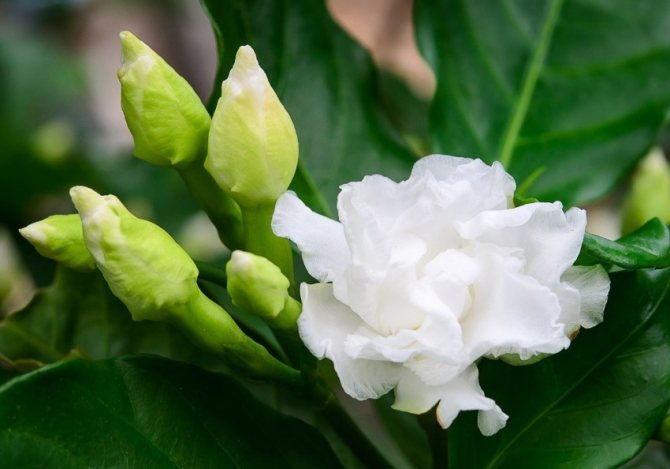

In winter, try not to carry or turn the flower, otherwise it may crumble and stop growing. Also, avoid drafts.
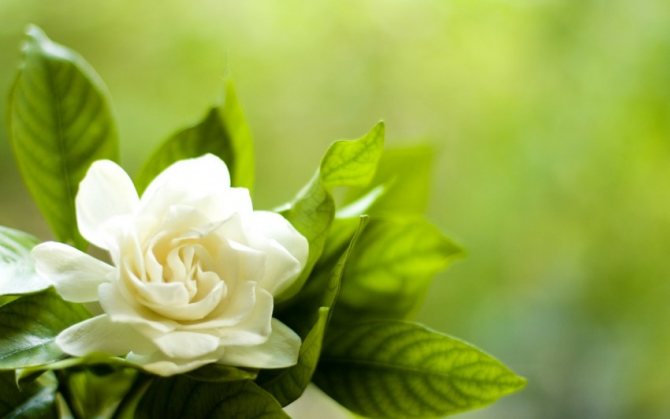

Some facts from the history of the flower
The Song dynasty, which lived about a thousand years ago, was the first to tell the world about the wonderful flowers of Gardenia. Pots of these flowering plants adorned the chambers of the emperors of China. The court gardeners did not allow the growth of bushes and formed bushes in the form of bonsai (spectacular miniature trees with a fancy crown) and made them abundant and luxurious flowering.
An extraordinary flower, with snow-white fragrant flowers that smell like blooming jasmine, was first described by the American botanist Alexander Garden in the 13th century. This plant was later named after him.
In Europe, Gardenia Jasmine appeared in the middle of the 18th century, where they also began to shape its crown by pruning. There she competed in beauty and fragrance with the most luxurious roses and peonies.
Plant pruning
Produced after flowering is complete. The plant is cut in half or 2/3.
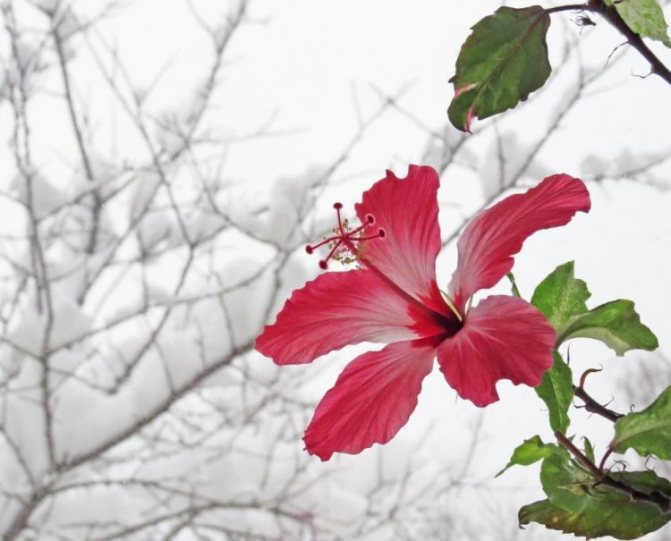

Hibiscus - seedling selection, care, reproduction and advice on watering the plant. 110 photos and video review of the flower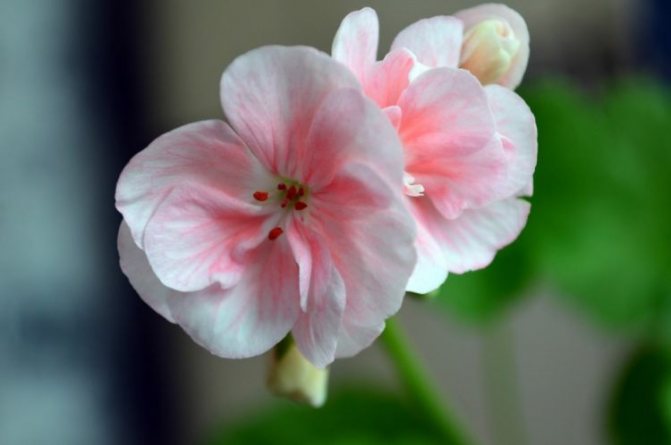

Geranium - secrets of growing, options for use and features of use in decor (95 photos and videos)
- Ahimenes: types, planting, care, reproduction and secrets of use in the garden and in the interior (115 photos)
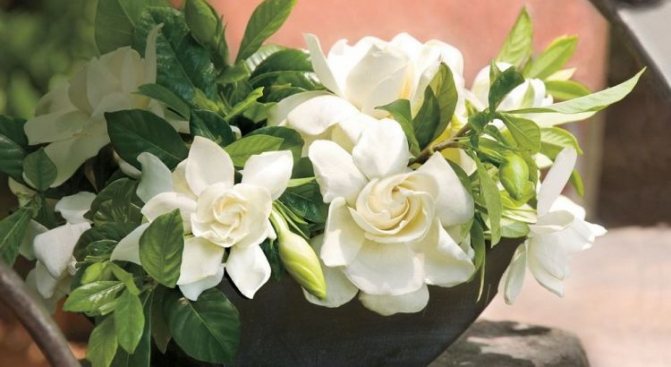

It is also recommended to pinch new shoots. This procedure will help stimulate shoot growth and increase the number of buds. The cut parts can be used for reproduction.
3. Varieties:
3.1 Gardenia jasmine or regal - Gardenia Jasminoides
Evergreen shrub from 1.5 to 2 m in height with abundantly branching, erect stems. Leaves are dark green, up to 10 cm long, thick, glossy, entire, lanceolate.The leaf blades are covered with a network of branched veins. The leaf petioles are short. The flowers are large - they reach 8 cm in diameter, resemble a rose, emit a very intense aroma reminiscent of jasmine. Flowering occurs from May to July.
↑ Upward,
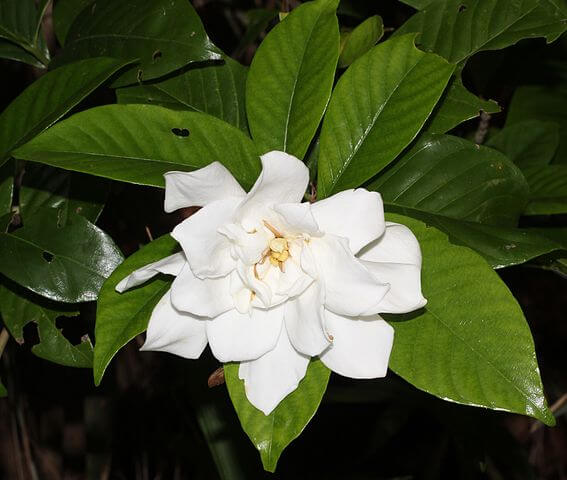

3.2.Gardenia Tahitian - Gardenia taitensis
Tall, multi-stemmed shrub, reaching 4 meters in height. Leaves are lanceolate, entire, dark green, arranged in opposite pairs. In length, the leaves reach 15 - 16 cm. Leaf veins are often highlighted with a lighter shade. Shoots are thin, flexible, branching abundantly. The flowers are light - white or cream, up to 9 cm in diameter, have a sweetish aroma.
↑ Upward,
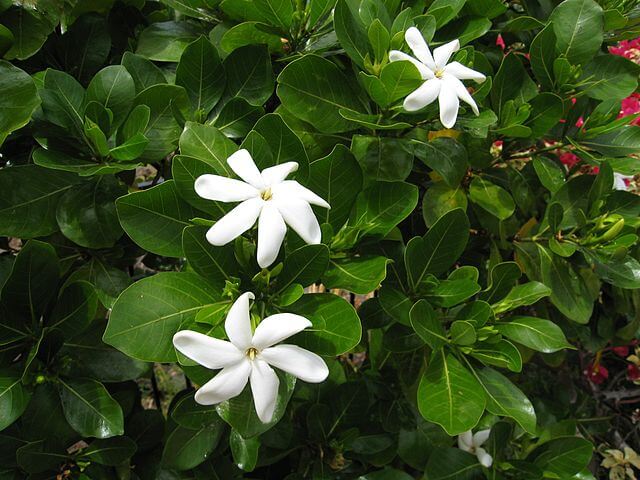

3.3.Gardenia Vietnamese - Gardenia vietnamensis
Fast-growing, evergreen, multi-stemmed shrubs with thin shoots up to 1 m high. Leaves are oblong lanceolate, dark green, whole-edged. The flowers are creamy, solitary, with narrow, long petals, have a sweetish aroma, which intensifies in the evening and at night.
You may also be interested in:
- Date palm at home - care, how to grow from a stone, photo, fruiting when growing in a pot, transplant, why the plant turns yellow and dries, description - what a palm tree looks like, watering
- Alyssum - photo of a flower, planting and care in the open field, growing from seeds, keeping a plant in a pots - soil, fertilizer, lighting
- Hamedorea - photo of a palm tree, home care, transplantation, causes of drying out of leaves, signs associated with indoor plants, reproduction, growing from seeds, diseases and pests, conditions of detention after purchase
- Violet - photo and description of varieties, home care, flowering time, watering indoor violets, reproduction, why plants do not bloom, how to transplant a flower, diseases and pests
- Croton - photo, home care, flower reproduction, plant types, signs, codiaum flowering time, propagation by cuttings, pruning, why croton dries and leaves fall, transplant
↑ Upward,


3.4.Gardenia Thunberg - Gardenia thunbergia
A multi-stemmed, dense, evergreen, large-flowered shrub or a small flowering tree from 1.5 to 4.5 m high. The leaves are oblong-oval, lanceolate, glossy, dark green, collected in whorls of 3 - 4. The flowers are spectacular, creamy, large reach a diameter of 8 cm. During the flowering period, the shrub emits a pleasant aroma, which is especially enhanced at night and in the evening.
↑ Upward,


Popular ways and methods of breeding
There are several ways to reproduce an exquisite houseplant:
- cuttings;
- lateral layering;
- seeds.
Cuttings cut at the end of winters, at the beginning of spring, cuttings from the tops of the plant about 8-10 cm long are placed in a substrate at room temperature. Immediately before the rooting procedure, agents that stimulate root formation are used. Organize greenhouse conditions for the planted twigs by placing a glass jar on top of the market or covering it with a transparent polyethylene bag. Do not be upset if the rooting process does not give a positive result. Even experienced flower growers take a long time and find this process difficult. Usually the cuttings are placed in a special earthen mixture; rooting in water rarely gives a positive result. When the cuttings take root, they are pinched. When sowing the collected seeds in the sand under glass, be careful, gardenia fruits are poisonous, like the stems and roots.

